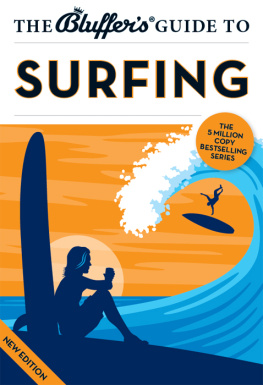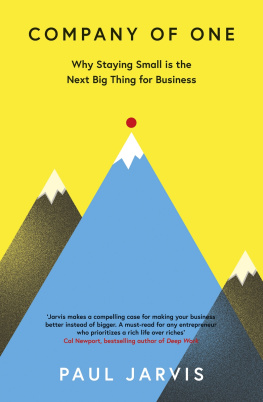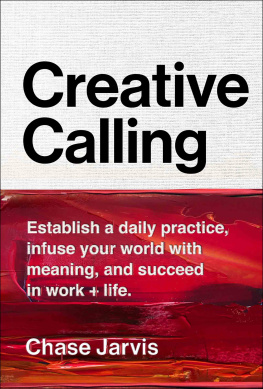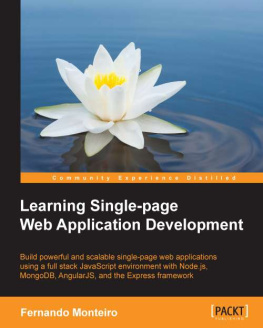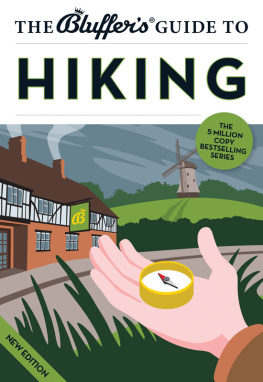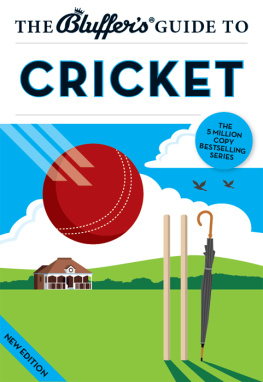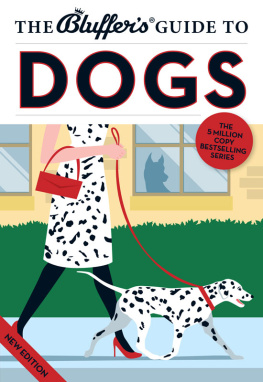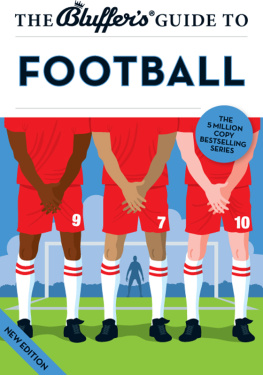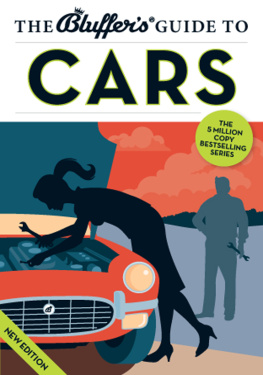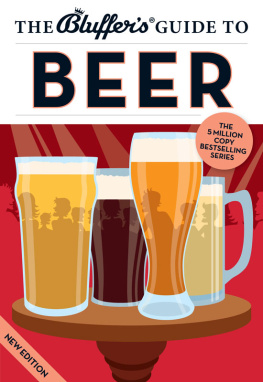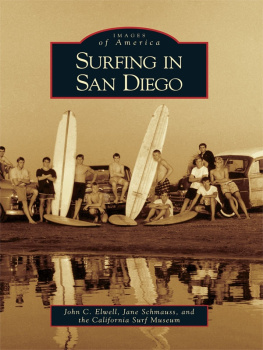Jarvis - Bluffers guide to surfing
Here you can read online Jarvis - Bluffers guide to surfing full text of the book (entire story) in english for free. Download pdf and epub, get meaning, cover and reviews about this ebook. City: Bluffers, year: 2013, publisher: Bluffers Guides, genre: Home and family. Description of the work, (preface) as well as reviews are available. Best literature library LitArk.com created for fans of good reading and offers a wide selection of genres:
Romance novel
Science fiction
Adventure
Detective
Science
History
Home and family
Prose
Art
Politics
Computer
Non-fiction
Religion
Business
Children
Humor
Choose a favorite category and find really read worthwhile books. Enjoy immersion in the world of imagination, feel the emotions of the characters or learn something new for yourself, make an fascinating discovery.
- Book:Bluffers guide to surfing
- Author:
- Publisher:Bluffers Guides
- Genre:
- Year:2013
- City:Bluffers
- Rating:3 / 5
- Favourites:Add to favourites
- Your mark:
- 60
- 1
- 2
- 3
- 4
- 5
Bluffers guide to surfing: summary, description and annotation
We offer to read an annotation, description, summary or preface (depends on what the author of the book "Bluffers guide to surfing" wrote himself). If you haven't found the necessary information about the book — write in the comments, we will try to find it.
Bluffers guide to surfing — read online for free the complete book (whole text) full work
Below is the text of the book, divided by pages. System saving the place of the last page read, allows you to conveniently read the book "Bluffers guide to surfing" online for free, without having to search again every time where you left off. Put a bookmark, and you can go to the page where you finished reading at any time.
Font size:
Interval:
Bookmark:


Colette House
52-55 Piccadilly
London W1J 0DX
United Kingdom
Email:
Website: bluffers.com
Twitter:
First published 2008
This edition published 2013
Copyright Bluffers 2013
Publisher: Thomas Drewry
Publishing Director: Brooke McDonald
Series Editor: David Allsop
Design and Illustration: Jim Shannon
All rights reserved. No part of this publication
may be reproduced, stored in a retrieval system
or transmitted in any form or by any means, electronic,
mechanical, photocopying, recording or otherwise,
without the prior permission of Bluffers.
A CIP Catalogue record for this book
is available from the British Library.
Bluffers Guide, Bluffers and Bluff Your Way
are registered trademarks.
| ISBN: | 978-1-909365-28-5 (print) 978-1-909365-29-2 (ePub) 978-1-909365-30-8 (Kindle) |

Understand the culture, get to grips with what is cool and what is not, grasp a smattering of the terminology, learn how to bluff your way out of ever having to go for a surf, and youre made.

A s you read these words, grubby and bearded feral surfers are stumbling along foreign shores searching for the perfect wave. Every surfer yearns to find his or her own secret point break on a remote island somewhere along with a beautiful island girl dressed in nothing but a G-string of coconut pith and whose father owns a nearby brewery, or a bronzed Adonis who surfs like a god, is utterly faithful, and has an ailing billionaire guardian who dotes on him and has no close family. Very few surfers live their dreams.
There are those (predominantly men) who travel around with boards strapped to their car roofs, parading to the unsuspecting public (mainly the cute ones in bikinis) that they are surfers. They understand nothing of the history, the legacy or which way a surfboard is supposed to go in the water (the pointy bit goes at the front). These people are often referred to as highway surfers. The difference between a highway surfer and a bluffer is a fine line, but by the end of this guide you will know exactly where that line is drawn.
Surfing is a difficult sport that takes years of hard work to acquire the minimum level of competency. Bluffers do not have years to spare, yet will find themselves entwined with those whose focus is on whether or not luminous wetsuits are still the thing (theyre not) or whether hardcore surfers should always have a shaggy dog with them at the beach (undecided, so plenty of mileage there). This is because surfing has just as much to do with the culture that surrounds it as it does with actually riding a wave. This suits the bluffer to perfection. Understand the culture, get to grips with what is cool and what is not, grasp a smattering of the terminology, learn how to bluff your way out of ever having to go for a surf, and youre made.
This short but definitive guide sets out to conduct you through the main danger zones encountered in surfing discussions, and to equip you with a vocabulary and an evasive technique that will minimise the risk of being rumbled as a bluffer. It will give you a few easy-tolearn hints and techniques designed to allow you to be accepted as a surfer of rare ability and experience. But it will do more. It will provide the tools to impress legions of marvelling listeners with your knowledge and insight without anyone discovering that before reading it you didnt know the difference between dropping in and going over the falls (neither of which you are advised to try).
A BIT OF HISTORY
Surfing has its roots in Hawaii, first recorded sometime around the end of the eighteenth century. Some say that it started earlier in Peru, but there is no irrefutable proof. So youre advised to stick to Hawaii, where it was the sport of kings. Well, men, women, chiefs and youths all surfed together, but Hawaiian royalty frequently reserved the best beaches for themselves. Basically, when the surf was up, everyone dropped whatever they were doing and went surfing. Much like today then, except in Hawaii it was done in the nude on boards made from koa wood (for the general populace) and from the aptly named wiliwili tree (for chiefs).
Unfortunately (or rather, fortunately for some), nude surfing often led to things like nude frolicking in the waves and casual sex. In the early 1800s Protestant missionaries frowned upon such unspeakable behaviour and put a stop to it on the grounds that it was far too much fun. Surfing went down the tubes, so to speak, for 100 years, until American writer Jack London arrived in Hawaii in 1907.
Despite trying to surf-ride for hours on end at Waikiki beach, London could not grasp the fundamentals of the sport and chose to write about it instead, making him the first surfing bluffer. Heres a sample of what he had to say about the waves:
The mere struggle with them, facing them and paddling seaward over them and through them, was sport enough in itself. You had to have your wits about you, for it was a battle in which mighty blows were struck, on one side, and in which cunning was used on the other side a struggle between insensate force and intelligence.
It was Hawaiian surfer Duke Kahanamoku, already an Olympic swimmer, who took to the waves around the same time and made it a sport. He proved himself to be incredibly skilled at it, despite the fact that he wore an extraordinary, genital-squeezing, hybrid Speedo/T-shirt one-piece swimsuit, which must have severely hampered his style. Duke became known as the father of modern surfing, and took it and his costume from Hawaii to show to the world.
THINGS TO TAKE ON BOARD
It is imperative to be able to join in on discussions that include topics like swell direction, tides, wave sizes, how to snake and get away with it, and the virtues of a frontside air reverse as opposed to full rail carving (see Glossary). You dont need to know much more than their names, but before you commit any of them to memory, you need some understanding of the surfboards themselves how they are supposed to work and what motivates the people who create them. Knowing something about the people who actually make the boards (known as shapers) is a leapfrog in the bluffers bank of recyclable information because they are generally very reclusive people. This is usually because they are either socially inept, paranoid or making themselves scarce because someone really is looking for them i.e., the police or a jealous husband.
BOARDS
Essentially, a surfboard is made by taking a chunk of foam (known as a blank), shaping it (either by machine or by hand), covering it with fibreglass and then sealing it with resin unless it is made from wood and coated with oil, for those who really want to get back to basics.
These days, there are many different methods of constructing surfboards with new, experimental materials. Some of them work; some of them result in boards that would be best accompanied by a steam iron, or boards with dimples the size of golf balls, or boards so heavy they can only be picked up by a forklift. These are usually sold to beginners for exorbitant amounts of money.
Surfboards first came out without any fins or skegs (the surfboard keels), but a legendary surfer called Tom Blake put a stop to that and a whole new fad started. It was very obvious that the boards performed better with a fin, but would one fin be better than two, or two fins better than three? Australian Mark Richards won four world titles on a twin-fin surfboard. Another Australian, Simon Anderson, put three fins on his, called it a Thruster, won contests with it, forgot to copyright his design and, consequently, is not as rich as he should be.
Next pageFont size:
Interval:
Bookmark:
Similar books «Bluffers guide to surfing»
Look at similar books to Bluffers guide to surfing. We have selected literature similar in name and meaning in the hope of providing readers with more options to find new, interesting, not yet read works.
Discussion, reviews of the book Bluffers guide to surfing and just readers' own opinions. Leave your comments, write what you think about the work, its meaning or the main characters. Specify what exactly you liked and what you didn't like, and why you think so.

